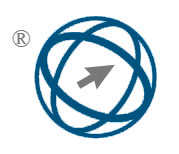Deep Reinforcement Learning for Personalized Route Planning in Agricultural Tourism: A DDPG and Genetic Algorithm Approach
Abstract
This research aims to develop an artificial intelligence route planning algorithm for agricultural tourism to provide a flexible, personalized, environmentally friendly, interactive and educational travel experience. By analyzing the characteristics and needs of agricultural tourism, we built a simulation environment to simulate the real agricultural tourism scene, and collected abundant data, including geographical location, traffic conditions, scenic spot information and tourist evaluation. In the data preprocessing stage, we clean, standardize, feature engineer and integrate the data to improve the accuracy and practicability of the algorithm. The algorithm design follows the principles of flexibility, individuation, environmental protection, interaction and education. We use deep reinforcement learning (DRL), especially the deep deterministic strategy gradient (DDPG) algorithm, to deal with the route planning problem with continuous action space. In order to improve the learning efficiency and performance of the model, we introduce genetic algorithm to optimize the hyper-parameters. In terms of personalized recommendation mechanism, we customize unique travel experience for each visitor by analyzing user's historical behavior, preferences, time constraints and other information. Combined with the route planning strategy of deep reinforcement learning, the personalized recommendation mechanism not only improves the user experience, but also promotes the effective allocation and utilization of resources. The performance of the algorithm is verified by simulation and optimization. The experimental results show that the proposed algorithm has made significant improvements in many aspects: the computing time is reduced from 250 seconds to 120 seconds, which is reduced by 52%, the user satisfaction is improved from 3.5 to 4.0, which is improved by 14.3%, the preference matching degree of the family parent-child group, the youth adventure group and the middle-aged and elderly leisure group is improved by 23.1%, 21.4% and 36.4% respectively, the average delay time during the morning and evening rush hours is reduced by 5 minutes respectively, and the average delay time during the morning and evening rush hours is reduced by 5 minutes. System response time and success rates remain high as concurrent user requests increase. These improvements prove the feasibility and superiority of our method. Future work will further explore the application of the algorithm in more scenarios and consider more realistic constraints to further improve the user experience.
Full Text:
PDFDOI: https://doi.org/10.31449/inf.v49i28.6865

This work is licensed under a Creative Commons Attribution 3.0 License.









